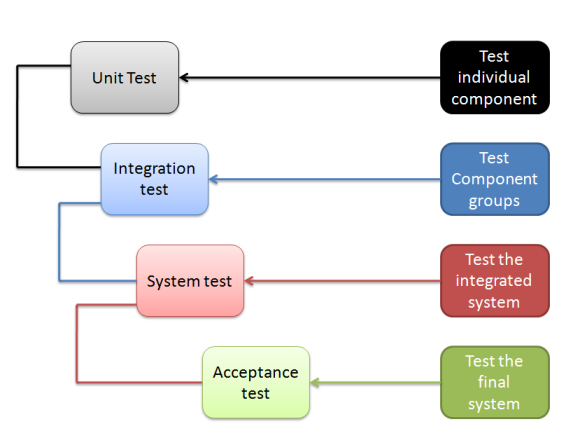Quality Assurance With Software Testing
Software Testing is the process of evaluating a system and its components with the idea of finding whether it satisfies the specified requirements or not for what is has been designed. Testing is executing a system to identify the bugs thereby improving the quality, any kind of error, or missing requirements in conflict with the actual specified requirement of the customer mentioned in SRS.
Software testing techniques can be classified on several basis and the main types are:
- Black Box Testing: This is a type of technique in which we perform without having any knowledge of the interior workings of the application. The tester is unaware to the system architecture and has no access to the source code.
- White Box Testing: White box testing is the detailed investigation of the internal logic and architecture of the code. White box testing is also called glass testing or open box testing. To perform white box testing, the tester needs to know the internal details of the source code.
There are 4 levels of software testing:
Unit >> Integration >> System >> Acceptance

The testing life cycle describes the steps/stages/phases in the testing of software:
- Design Review>>Test Planning>>Test Designing>>Test Environment Step>>Test Execution>>Test Reporting
Necessity Stage:
This is the phase where programs consider the necessities of the product that needs to be produced. A product outline is produced and a group of analyzers likewise gets included in this methodology as they can think as a client which designers are not ready to do.
Test Planning:
To diminish dangers, a Test Plan is created. “He who neglects to arrange, arrangements to fizzle” is an acclaimed maxim cite that fits this phase of STLC. A test arrangement structure for different programming projects is distinctive however regularly it would be similar to this:
- Presentation
- Test Items
- Gimmicks to be tried
- Emphasizes not to be tried
- Approach
- Thing pass/fizzle criteria
- Suspension criteria and resumption prerequisites
- Test Deliverable
- Testing Tasks
- Environment needs
- Staffing and preparing needs
- Dangers and possibilities
- Approbation
Test Analysis:
In this stage, programming analyzers would figure out which QA system is to be executed amid every SDLC (Software Development Life Cycle) step.
Test Design:
Test outline is done focused around the prerequisites specified in the SRS (Software Requirements Specifications) documentation. Analyzers choose whether manual or robotized testing needs to be done in this stage.
You can click on following button to download the PPT on Software Testing Techniques.
